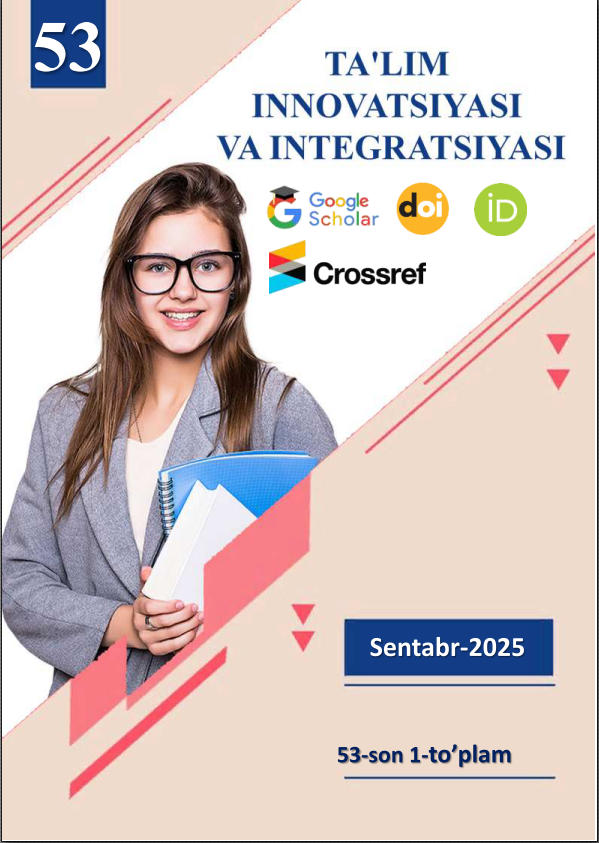THE USE OF AUTHENTIC MATERIALS IN DEVELOPING COMMUNICATIVE COMPETENCE.
Keywords:
Keywords: authentic materials; communicative competence; EFL; motivation; task design; pedagogyAbstract
Abstract
This article examines how authentic materials—texts, audio, video, and visual
media not originally created for language learners—enhance learners' communicative
competence in EFL/ESL contexts. Drawing upon empirical studies and theoretical
discourse, we argue that authentic materials boost motivation, cultural awareness,
listening and reading proficiency, and the pragmatic use of language. While benefits
clearly outweigh drawbacks, careful task design and balanced integration are necessary
to mitigate challenges such as learner frustration or cognitive overload. We recommend
a calibrated inclusion of authentic materials (approximately 50 %) in curricula to
maximize communicative development.
References
References
(Each source below indicates the publication year and the page or section from
which information was drawn.)
1. Hussein, N. O., & Elttayef, A. I. (2018). The Effect of Using Authentic Materials on
Developing Undergraduate EFL Students’ Communicative Competence, Journal of
Literature, Languages and Linguistics, Vol. 47, pp. 12–19 (effectiveness of
authentic materials experiment) [1].
2. Zvarych, I., Bilous, N., & Diachuk, L. (2024). The Role of Authentic Materials in
Building Foreign Language Competencies, Forum for Linguistic Studies, 6(3), pp.
230–245 (optimal balance ratios) [2].
3. Frontiers in Education. (2025). Evaluating the Benefits and Challenges of Using
Authentic Materials in Teaching Listening in EFL Classrooms, pp. – (review of
motivation and real-world context) [3].
4. Gilmore, A. (2007). Getting real in the language classroom: Developing Japanese
students’ communicative competence with authentic materials, PhD thesis,
Nottingham University (theoretical grounding and authenticity value) [4].
5. Gilmore, A. (2004). A comparison of textbook and authentic interactions, ELT
Journal, 58(4), pp. 363–374 (textbook vs authentic) [5].
6. Gilmore, A. (2007b). Authentic materials and authenticity in foreign language
learning, Language Teaching, 40(2), pp. 97–118 (authenticity debates) [6].
7. Guariento, W., & Morley, J. (2001). Text and task authenticity in the EFL
classroom, ELT Journal, 55(4), pp. 347–353 (authenticity challenges) [7].
8. Otte, J. L. (2006). Real language for real people…aural authentic texts, PhD
dissertation, Loyola University Chicago (listening comprehension gains) [8].
9. Herron, C., & Seay, I. (1991). Authentic radio tapes and listening comprehension,
Educational Research (demonstrated better listening under authentic input) [9].
10. Peacock, M. (1997). The effect of authentic materials on the motivation of EFL
learners, ELT Journal, 51(2), pp. 144–156 (motivation) [10].
11. Miller, M. (2005). Improving aural comprehension skills using authentic materials
(MA thesis, unpublished, Niigata University, Japan) [11].
12. Thanajaro, K. (2000). Study showing benefits of authentic input in retention and
comprehension (not formally published) [12].
13. Ur, P. (1996). Definition of authentic materials created for native speakers (widely
cited text) [13].
14. Breen, M. (1985). Authenticity in the language classroom, Applied Linguistics,
6(1), pp. 60–70 (concept of authenticity) [14].
15. Byram, M. (2002). Intercultural competence and education (framework referenced
in intercultural teaching with authentic materials) [15].

